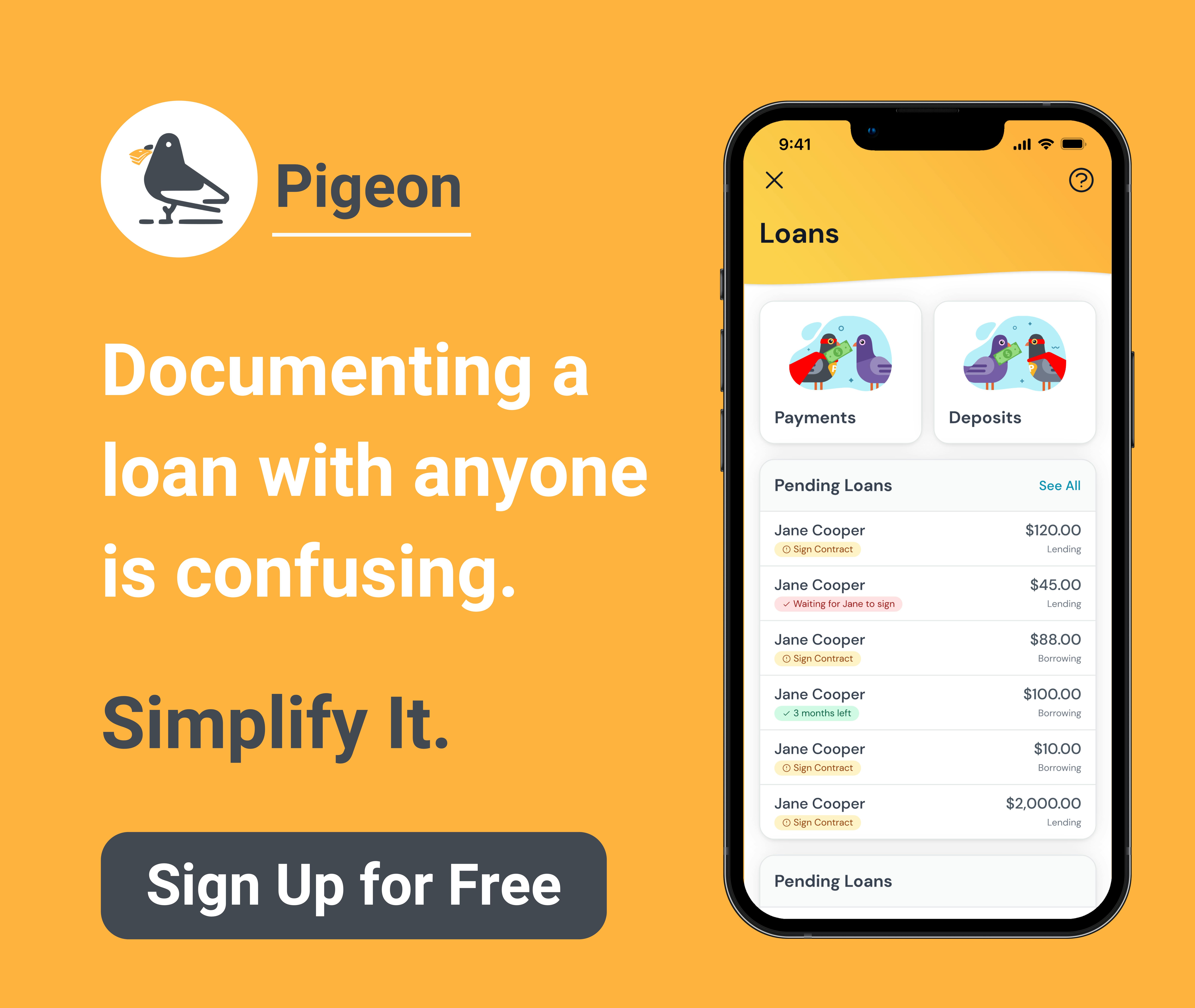It is not common for homeowners (sellers) to lend you the money to buy their property. But occasionally, it’s an option that works well for everyone involved.
If you are trying to buy a home and cannot qualify for a mortgage from traditional lenders, owner financing is a rare but valid possibility. In this scenario, instead of getting a home loan from a traditional lender where certain somewhat stiff conditions must be met, the borrower gets a loan directly from the homeowner or seller.
This arrangement favors both the buyer and the seller, allowing them to avoid the extra hassles that often come with traditional financing processes—such as credit checks. The owner also gets to sell the house a lot faster.
Find this financing option interesting? Let's explore everything you should know about owner financing, including the associated legal conditions to prepare for.
What is Owner Financing?
Also called seller financing, owner financing is a transaction where the homeowner (seller) finances part or the entire purchase of the home for the buyer. Simply put, the buyer borrows money from the seller instead of a traditional lender like a bank.
This could be the full amount needed to purchase the home or a percentage of it (if the borrower was only able to qualify for a smaller loan from a bank). In the latter case, the buyer would combine their loan with owner financing to pay for the property.
Owner financing simplifies the purchase process as neither party has to deal with lenders or meet appraisal requirements. However, it does pose some risks to the homeowner.
Let's break down how owner financing works.

How does owner financing work?
Owner financing is similar to a traditional mortgage, where the buyer pays a down payment and pays the remaining balance over time. The buyer and seller will agree on the interest rate and other conditions like payment schedules and the monthly amount. Once the financing terms are decided, the buyer gives a promissory note to the lender, which is then added to public records to protect both parties. In most cases, the seller keeps the home title or lien until the buyer pays off the loan.
Payments are made based on an agreed-upon schedule and payment method, such as recurring wire transfers or using a loan tracking and payment platform such as Pigeon.
The loan terms are often shorter, say five or ten years for this arrangement, and come with lower monthly payments. Typically, both parties agree to amortize the loan over 20 or 30 years until the buyer completes the payment. Formerly, the buyer would have to pay a lump sum, called a balloon payment, when the loan term ends. However, the Dodd-Frank act, which prohibits most mortgage-related balloon payments, was passed in 2010 to reduce payments on high-cost mortgages.
As a result, the loan term may increase, and the seller bears the risk of the buyer defaulting on payment. Both parties can negotiate and set the loan details under state-specific laws.
Look at this quick example 👇
A buyer is very interested in a property with a $400,000 purchase price. The house has been on the market for a long time, and the owner is eager to sell. The buyer can put a 20% or $80,000 down payment upfront and would have to finance the remaining $320,000 but cannot get a loan from the bank.
The seller agrees to lend the remaining amount to the home buyer at a negotiated interest rate to be paid off for about 5-10 years on an amortization schedule. The buyer agrees, and both parties sign the agreement. That's it!
Note 📝 : Many owner financing agreements are done between friends and family or acquaintances. Down payments are not always required, but many sellers expect it as they believe buyers with some equity on a property are less likely to default on payments.
An owner financing agreement should always be laid out in a written document showing the details of the arrangement. This can be structured differently, depending on what both parties agree on.

Forms of owner financing deals
There are four main ways to structure an owner financing agreement.
1. Promissory note
As stated earlier, the buyer and seller will agree to all the loan details like loan amount, interest rate, amortization schedule, monthly payments, etc, and record these in a promissory note. Once all details are set, the loan is secured and the agreement is recorded with the local government.
Bonus: Check out Pigeon's free for more details.
2. Lease-purchase agreement
This is also known as a rent-to-own agreement. Here, the buyer leases the property for a period and pays rent to the seller. When the lease term ends, the buyer can either purchase the property at a set price or give up the lease option. If the buyer decides to pay for the apartment, the past rent is applied towards the cost of the house and the buyer gets the title after payment is completed.
3. Land contract
Under this agreement the buyer must complete all payments before receiving the property title. It is also known as an installment sale. If the buyer refinances the loan with another lender, the title will be transferred after the seller is fully paid.
4. Second mortgage
In cases where the buyer can only get a traditional mortgage to cover half of the cost of the property, the seller offers owner financing in the form of a second mortgage to cover the remaining amount. This second mortgage often comes with a shorter loan term and the buyer will have to pay it off in time or refinance.
Owner financing seems straightforward and a great option for buyers in a tricky financial situation and sellers who want a faster closing process. However, there are certain pros and cons that you should be aware of.

Pros and Cons of Owner Financing
Owner financing has advantages and disadvantages for both buyers and sellers. Let's explore them below.
Pros of owner financing for buyers
- Flexible loan terms: Unlike those of a traditional mortgage loan, owner financing loan terms are tailored to suit your unique situation. Both parties can choose the best repayment option, whether a fixed-rate amortization or an interest-only option. They also get to decide whether or not the interest rate will remain the same or change throughout the loan term.
- Lower closing costs: Since you are not dealing with a traditional mortgage lender, there are no administration fees, processing fees, or other miscellaneous fees that these institutions charge. Hence, you have fewer closing costs.
- Faster closing process: The downtime that often comes with loan processing from traditional lenders does not exist in owner financing. The process is faster and more seamless.
- Easy to qualify: Buyers will likely have an easier time qualifying for owner financing. While some sellers may choose to check credit scores and other conditions the same way a bank would, the decision ultimately boils down to the seller’s desire. Like borrowing from family and friends, it is more accessible to more people.
- No minimum down payment: This arrangement usually makes down payment requirements quite flexible. Sellers may let buyers make periodic down payments if they cannot afford it all at once.
Cons of owner financing for buyers
- Higher interest rates: Sellers can view the buyer's inability to qualify for a traditional loan as a red flag. So, to protect themselves, they will ask for higher interest rates than what conventional lenders request.
- The seller may have a due-on-sale clause: If there is an existing loan on the property, an alienation or due-on-sale clause may prevent the seller from offering owner financing until the mortgage is paid off.
- Shorter loan terms: Owner financing loans are often short-term, resulting in higher mortgage payments. Sellers use a shorter period of time to recover their money as soon as possible.

Pros of owner financing for sellers
- Monthly cash flow: the seller gets monthly payments from the buyer, which is great if cash flow is a priority.
- Higher interest rate: sellers can get a considerably higher interest rate from owner financing than other low-cost investments.
- Fast sale: Homeowners can sell their properties as it is, without all the appraisal, lending, and due diligence requirements.
- Title retention: sellers often get to keep the home title until the buyer completes payment.
Cons of owner financing for sellers
- High risk: sellers are exposed to great risk of payment default or non-payment by the buyer, and could end up having to undergo foreclosure if the home was under a mortgage.
- Dodd-Frank Act: Federal law limits balloon payments due to the Dodd-Frank act and places other restrictions on owner financing. However, these restrictions don't apply to the sale of vacant lands, rentals, and commercial properties.
- Repair costs: If the buyer defaults on payment, the seller will have to bear the cost of repairs after getting the property back.
- Higher taxes: sellers may be forced to pay ordinary income tax rates on the installment sale, which is higher than the capital gains tax they would have paid on an outright sale.
Smart tip💡: As a seller, you are making a loan when offering owner financing. Therefore, you must report it to the IRS on your taxes by filling out a schedule B form and including all your buyer's details.
Is owner financing good for you?
If you’re a seller, and all of these are true:
- You want to sell your home quickly
- You prefer monthly income to outright payments
- You’re confident that the buyer can make all payments
- You’d still be financially stable even if the buyer couldn’t make their monthly payment
…then owner financing is probably a good idea for you.
On the other side of the equation, if you’re a buyer who cannot get a traditional mortgage or a personal loan right now, then owner-financed homes may be the only path to home ownership. But you shouldn’t solely rely on your real estate agent for guidance in this matter. Find a professional real estate attorney to go over the deal and ensure every detail is in-line with state laws, all contingencies are covered, and both parties are equally protected.
This step is critical because owner financing is so flexible, allowing buyers and sellers to set the terms of their agreement on pen and paper—or through a platform like Pigeon—and bypass some of the requirements and restrictions set by banks and other lending institutions.
Putting pen to paper when exploring the owner financing route is a good option when buying property from family or friends. Keep in mind however, having a legal framework to protect both parties is crucial, even when the parties have a close relationship—that’s why Pigeon exists, and it’s why owner financing agreements should always be formalized and recorded correctly.
💡Smart tip: If you are a buyer, take the extra step of conducting a paid title search to be 100% sure that the homeowner is in a position to sell the property. This also ensures the buyer can transfer the home title to you once the payment is complete.

Frequently Asked Questions on Owner Financing
Let's go over three commonly asked questions about owner financing.
1. Who pays property taxes on owner financing?
Answer: The buyer pays the property taxes to the seller monthly in installments. The seller then pays the total annual amount to the different agencies. Usually, both parties will lay out the responsibilities for insurance and tax payments in the agreement.
2. Who holds the title in owner financing?
Answer: The seller or homeowner holds the property title until the buyer completes payment. The buyer holds equitable title on the property but will only get the deed after the seller transfers ownership.
3. Where do I find sellers offering owner financing?
Answer: Usually, sellers will add this to their listing descriptions. You can search keywords like 'seller financing' or check 'for sale by owner’ listing websites. Your realtor may also have some great leads.
Smart tip💡: Since owner financing is an unconventional way to buy or sell a house, be sure to do extensive research and go over the IRS rules for owner financing to avoid making any costly mistakes.
An owner financing arrangement can be the right decision for buyers and sellers under the right conditions. It’s important to do your homework and ensure that all the legal bases are covered; that there’s documentation in place that will allow both parties to avoid ambiguity.
However, due to the associated risks for both parties, you must weigh your options carefully and consult licensed experts before signing any contract. When done right, owner financing can be the fastest route to home ownership for buyers and a steady monthly income for sellers.

Want to read more related content? Check out some more of our awesome educational pieces below:




